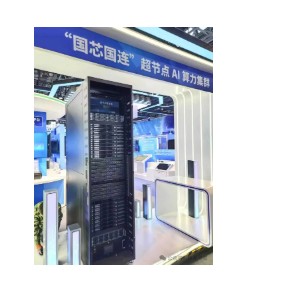
Thoughts on the Haiguang Restructuring

Haiguang's strategic restructuring has sparked thoughts on the future of the domestic semiconductor industry, similar to AMD's acquisition of ZT System. With the development of AI technology, Chinese semiconductor companies need to shift from simple domestic substitution to system-level definition, emphasizing the collaborative optimization of chips with software and algorithms. NVIDIA's new technologies such as NVLink Fusion demonstrate industry trends, and the development of domestic AI needs to focus on the decoupling of computing power, storage, and transportation capabilities, as well as system definition capabilities. Although Haiguang's restructuring is not considered leading, it is not too late in terms of industrial logic
Seeing the news about Haiguang's strategic restructuring, what was your first reaction? Very similar to AMD's acquisition of ZT system. At that time, many people were asking whether ZT could still engage in NV business afterward. Tonight, a similar question arose: can Shuguang still engage in other domestic card businesses...
Every major leap in semiconductor history has been accompanied by mergers and acquisitions, and China is no exception. However, under the backdrop of AI, a new requirement has been added for Chinese players: to move from purely domestic substitution to system-level definition. From aiming at foreign targets to adapting to local conditions, defining a technology stack suitable for China itself.
We previously mentioned DeepSeek's new paper, and the core idea at the end expresses that the biggest difference in chip demand from the new "downstream" of AI is that the "independent functionality" of chips may be significantly weakened, especially at this stage, chips may need to be redefined and optimized along with software and algorithms.
NVIDIA's GB200 and Huawei's Matrix 384 prove a logic: pure computing power (Flops) is no longer the only constraint for AI hardware infrastructure. Whether in the previous pre-training phase or the current post-training and inference scaling, there are higher demands for balancing networks, latency, computation, power consumption, etc., which is known as "system definition capability." Especially for domestic AI, decoupling computing power, storage, and transportation may be the correct direction.
NVIDIA's launch of NVLink Fusion also reflects the same industrial trend. Essentially, it hopes to define NVLink as "CUDA" in hardware systems, becoming an industry standard. CUDA + NVLink continues to lock in the definition rights of the system ecosystem.
As we mentioned last week, Reuters started reporting this weekend that the new cut-down card may not even have HBM, only GDDR7 left. For the Chinese market, NVIDIA's idea might be that if GPUs cannot come in, then separate storage, computing, and transportation, lower the specifications for computing and storage, and define transportation as a separate product, coming in under a different guise (whether NVLink Fusion can enter China is still unknown).
Returning to Haiguang's restructuring, setting aside the upper-level intentions, from an industrial logic perspective, it's not too late, but certainly not leading either. Today, I saw a picture on pyq: even Kunlun Core is working on super nodes...

There were some rumors in the community that the performance of XX's single card is indeed very strong, and CUDA adaptation is quite smooth, but when it comes to cluster networking, there seems to be room for improvement. Here comes the solution.
On the other hand, due to various national conditions, inefficiencies and redundancies in domestic semiconductors have certainly existed in the past. In contrast, the "monopoly" established by overseas tech giants through market competition may actually have the highest efficiency from the perspective of the entire tech ecosystem Simply looking at AI may have already passed the "competition among heroes" replacement stage from 0 to 1, and it may be more important to define new demands with higher efficiency, especially for the current stage of China's semiconductor and technology industry.
Finally, I hope that China's semiconductor industry can find its own "system-level answer" within our ecosystem in the upcoming wave of mergers and acquisitions.
This article is sourced from: Information Equality, Author: Information Equality, Original Title: "Thoughts from the Reorganization of Haiguang"
Risk Warning and Disclaimer
The market has risks, and investment requires caution. This article does not constitute personal investment advice and does not take into account the specific investment objectives, financial conditions, or needs of individual users. Users should consider whether any opinions, views, or conclusions in this article are suitable for their specific circumstances. Investment based on this is at one's own risk

